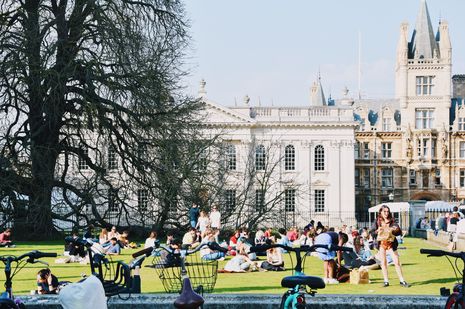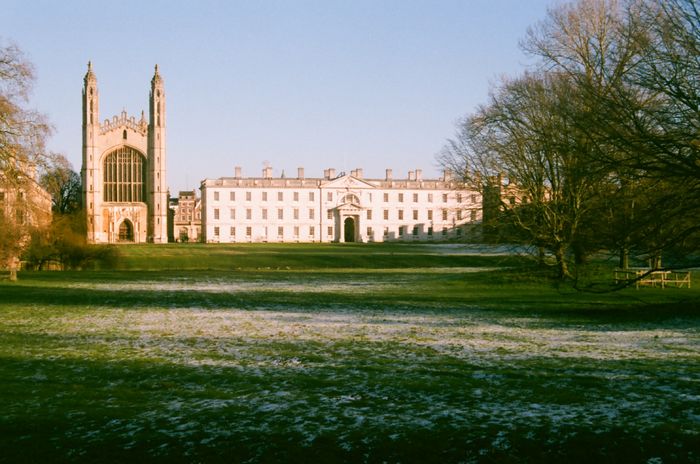University education should be democratised to serve the community
Columnist Harvey Brown argues that Universities should be democratised to serve the needs of local communities and the general public

Universities should be public spaces. Especially in Cambridge, the university plays a central role in defining and shaping community life. However, as it stands Cambridge University lacks the defining quality of a public space: the freedom for strangers to mingle freely. Because this mingling does not occur, university campuses are often ignorant of the material reality which surrounds them.
It is no coincidence that the most unequal city in the UK contains the wealthiest university in Europe. As we enjoy all the privileges that being a Cambridge student affords, we forget that our experience of the city — essentially encounters with other students — is not universal. While the central university alone spends nearly £50 million a year on the upkeep of its estate, children in the city are living with opportunities so limited that in some cases they have ”never seen the river Cam”. In 2020, one in every hundred households in Cambridge were assessed as either homeless or at risk of homelessness. And yet, because we exist in a physical bubble, the university makes it difficult to make the connection between the opportunities we enjoy and the lives of the 80% of Cambridge residents who make up the “town” side of the “town/gown” divide.
“Gatekeeping conceals the potential for our campus to become a social-hub”
By rendering education a service rather than a right, the marketisation of education has strengthened the university’s fortress mentality. Only students — who are effectively paying for entry — are granted exclusive access to the space and resources the university possesses. For everyone else in the city, the colleges are what they’ve always been: a gatekept space.
What this gatekeeping conceals is the potential for our campus to become a social-hub, rather than a service available for an elite-few. A 2016 study at the Milano Bovisa Durando campus of Politecnico di Milano illustrated ways to democratise campus spaces. Community members, students and staff were invited to reimagine how land was utilised. ‘Entering the campus’, the researchers observed, ‘made people understand how they can use the space on an everyday basis’. Initiative participation from members of the public ranged from people without gardens who wanted to help grow vegetables, to parents wanting somewhere quiet to bring their children.
“Public access is a responsibility of the University”
Meanwhile, for university participants, ‘the event allowed the university community to contextualise the site of their education’. The campus became a point of broader education, a type which can exist only when an academic bubble is burst, when communication and collaborations are made across historic “town/gown” divides.
Public access is standard-practice in many educational institutions across the world. Until 2020, many universities in Hong-Kong were community spaces, in which locals could have dinner in university halls, use university grounds, or attend lectures. This principle has been described by Michael O’Sullivan as ‘integral to the public spirit, since government funding supports all Hong Kong’s universities’. It’s seen as a responsibility on the university’s part: ‘institutions themselves have also been keen to give back to their communities by providing recreational spaces for people living in congested urban centres’.
It’s hard to know what an open-access university would look like in Cambridge. The good news is we don’t have to. Not on our own, at least. The first step towards restoring access requires understanding the needs of the community; something which, as the Milano study shows, requires extensive consultation. If things are to change, they must change collaboratively. This is the opposite of gatekeeping: talking to your neighbours.
It might be that this results in facilities like the University of Worcester’s Hive Library, the country’s first joint university and public library; or the community garden leased out by Corpus Christi College, Oxford, for the price of a jar of honey per year. It might include opening the doors to lecture theatres, and encouraging true public education. It should involve, as It Takes a City suggest, using university land to build secure and comfortable shelter for unhoused people in the city. It’s not really for us to say. Part of the problem is the fact that the function of community spaces is strictly dictated — and policed — by us.
In the era of the landlord university, this is not just about spaces in Cambridge. The university and its colleges owns vast tracts of farmland and forest across the UK. As in Cambridge, it is often only privileged groups who are afforded access to green space and countryside, while marginalised groups — who historically were forced towards industrial-labour in cities by colonisation and enclosure — are left without access to the land. Many groups are already taking a lead on addressing land inequality and demanding land-based reparations for BPOC communities. Particularly in light of its historic complicity in colonial projects, working with these groups to address, democratise, and, where possible, redistribute the university’s land ownership must be an important part of decolonising the institution.
Above all, this requires addressing the power-dynamic which underlies our land ownership. The university, as landowner, has the power to control the space, while those using it have little say in its oversight or management. Of course, true land democracy will never be entirely possible under a system where land ownership is concentrated in the hands of a few wealthy individuals and institutions who have the right, by law, to alienate, consume, and destroy land in which we all have a stake. Yet the alternatives to this system can begin by letting in — and, crucially, listening-to — the community around us.
 News / Eight Cambridge researchers awarded €17m in ERC research grants27 December 2025
News / Eight Cambridge researchers awarded €17m in ERC research grants27 December 2025 News / Clare Hall spent over £500k opposing busway 24 December 2025
News / Clare Hall spent over £500k opposing busway 24 December 2025 Comment / League tables do more harm than good26 December 2025
Comment / League tables do more harm than good26 December 2025 Comment / The ‘class’ of Cambridge24 December 2025
Comment / The ‘class’ of Cambridge24 December 2025 News / Caius mourns its tree-mendous loss23 December 2025
News / Caius mourns its tree-mendous loss23 December 2025










